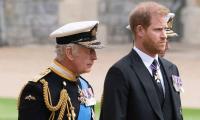LAHORE: As shadows of a deadly US-Iran war loom large, following the killing of a key Iranian Gen Qasem Soleimani, a few days ago in Baghdad on direct orders from American President Donald Trump; it is time to compare the military might of both these long-estranged nations — nourishing an enmity since the last 67 years.
The London-based International Institute for Strategic Studies (IISS), a globally-acclaimed research institute that claims to provide objective information on military, geopolitical and geo-economic developments that could lead to conflict, states: “On June 20, 2019, Iran’s Islamic Revolutionary Guard Corps shot down a United States surveillance drone over the Strait of Hormuz using its new ‘Seveom-e-Khordad’ air-defence system. The incident was the culmination of rising tensions in the Persian Gulf and nearly caused an armed confrontation between the two countries. US President Donald Trump called off a retaliatory attack at the last minute”.
The think-tank adds: “The episode reflects Iran’s confidence that, despite obvious asymmetries, its regional power and reach enable it to deter the US military from acting against Iran. Since the US and others perceive Iran as a major threat to regional security and stability, it is important to analyse its military strategy and understand its drivers, objectives and implications”.
Tracing the history of US-Iran animosity: The International Institute for Strategic Studies writes: “The distrust between Iran and the US dates back to 1953, when the American and British governments engineered a coup against Iran’s Prime Minister Mohammad Mossadegh for geopolitical reasons. Since then, each side has compiled a long list of grievances”.
Iran has often accused the United States of supporting the pro-Western regime of Mohammad Reza Pahlavi – the Shah of Iran – and its backing for Iraqi president Saddam Hussein in Iran–Iraq War. The International Institute for Strategic Studies has further viewed: “The Iranian leaders have accused the US of supporting various activities to topple the regime, and strongly believe that US policy on Iran aims ultimately for regime change, which Washington could choose to achieve by military invasion. As a result, Iran’s military strategy has developed primarily to ensure a robust response against a US invasion or regime destabilisation so as to deter military action”.
According to “Global Firepower”, a military ranking website that has provided a unique analytical display of data concerning 137 modern military powers since 2006 according to each nation’s potential war-making capability across land, sea and air fought with conventional weapons, the United States is ranked as having the world’s strongest military, while Iran falls behind in 14th place out of 137 countries considered in the annual review.
Additional information from the American CIA, the Switzerland-based International Campaign to Abolish Nuclear Weapons, the US government websites and press releases reveals that the armed forces of the United States of America are served by 12,81,900 active personnel, the country has a military budget of $610 billion, has 7,200 nuclear warheads in its arsenal, it is equipped with 6393 tanks, loaded with 41,760 Armoured Fighting Vehicles, 3,269 Artillery, 950 self-propelled guns, 1197 rocket artillery, 12,304 aircraft, 457 fighter planes, 2192 multi-role planes, 587 attack planes, 4889 helicopters, 437 naval ships, 20 aircraft carriers, 85 destroyers and 71 submarines.
The American military’s Armoured Fighting Vehicles include infantry fighting vehicles, tank destroyers, armoured personnel carriers, mine-resistant ambush protected vehicles, amphibious and reconnaissance vehicles, while its total artillery includes towed, Self-Propelled Gun (SPG) and rocket artillery. The United States was the first country to develop and to use nuclear warheads in the world. Everything started from the Manhattan project, a research that had one particular goal in focus – to develop and produce the first nuclear weapon. Americans were the first to wield such powerful weapon.
Everything started in 1941, which is date of the beginning of Manhattan project. Since the end of the Second World War, United States became the leading country when it comes to possessing nuclear warheads and it lasted approximately to 1980s. We should also bear in mind that United States is also the only nation that ever used nuclear weapon in military conflict. In 1960, the amount of warheads stored by America had exceeded 30,000.
However, throughout the entire period of the so-called Cold War, USA managed to build approximately 70,000 nuclear warheads, what is more than all other countries with access to nuclear weapons combined. From the first test that took place in 1945 to this day, the USA has conducted 1054 tests of atomic bombs. Still, as a result of introduced restrictions on the amount of warheads one state can possess, the current number has dropped to 6500 warheads.
Noteworthy is also the fact that out of this number, United States deployed only 1600. On the other hand, according to sources and references cited above, Iran has a military budget of $19.6 billion, has 2531 tanks, 1625 Armoured Fighting Vehicles, some 4,096 Artillery, 570 Self-Propelled Guns (SPGs), 1,438 rocket artillery, 850 aircraft, 130 fighter planes, 73 multi-role planes, 52 attack planes, 324 helicopters, 406 naval ships and 40 submarines. The Iranian armed forces are served by 523,000 active personnel and 350,000 reserve personnel.
It is pertinent to mention that on April 30, 2019, the “Voice of America” had asserted: “A new report released by the Stockholm International Peace Research Institute on world military expenditure (SIPRI) on April 29 has assessed Iran’s military spending in 2018 as more than $13 billion. Iran’s economy faced a crisis in 2018, with its currency declining four-fold against major currencies and its oil exports, which generate most of its income, reaching one million barrels a day from a high of 2.5 million. New US sanctions played a major role in the sudden deterioration of Iran’s economy.
However, in spite of a decline in Iran’s oil revenues as a result of US sanctions, last year, Iran withdrew sums from its foreign currency reserves to spend on its regional military ambitions. In a bigger picture, Iran has spent a total of close to $140 billion on its military ambitions during the past 10 years, the report said”.
According to a recent Iran-US military comparison story published in “Metro”, United Kingdom’s highest-circulation (over 1.415 million for a particular month in 2019) newspaper, a breakdown of Iran’s military power shows the country has an estimated 523,000 active personnel in the army, navy, air force and the Islamic Revolutionary Guard Corps (IRGC), a branch of the Iranian Armed Forces.
According to “Metro”, Iran’s land power consists of 8,577 combat tanks, rocket projectors, self-propelled artillery, armoured fighting vehicles and towed artillery. Air power, including all the air craft and helicopters, stands at 512 assets, while it possesses 398 ships, submarines and mine warfare. The country currently has 12 operational missiles, which are mostly short-range and medium-range, while a number of them are at development stage.
“Metro” states: “The US is widely accepted as having the world’s strongest military. Its powers are considerably stronger than Iran’s with 1,281,900 active personnel and an extra 144,872,845 in available manpower. It has a staggering $716 billion (£547.6 billion) defence budget and although it has less missiles than Iran (seven) they are far more advanced, including the Trident D-5 and an intercontinental ballistic missile (ICBM), according to “Missile Threat”.
“The Missile Threat” is a website that claims to bring together authoritative and update open source information and analysis about ballistic and cruise missiles around the globe and the systems designed to defend against them. The “Missile Threat” is a product of the Washington DC-based “Missile Defense Project at the Center for Strategic and International Studies (CSIS)”.
The “Metro” maintains: “It is understood that the US and Russia possess more than 90 per cent of the world’s nuclear warheads and the two nations have almost equal numbers. The nation also has the largest air and naval force – the latter measured by tonnage – in the world. The United States boasts of having 48,422 combat tanks, rocket projectors, self-propelled artillery, armoured fighting vehicles and towed artillery. In air power, the US currently has 10,170 assets and 415 in naval forces”.
Khawar Manika's counsel continued his arguments on Wednesday in a petition filed by Imran Khan and Bushra Bibi
IHC reserved judgment on the petition against registration of cases against former interior minister Sheikh Rashid on...
Saudi woman who was reportedly kidnapped from Islamabad’s residential Sector F-8 in mysterious circumstances, has...
Pakistan Navy warship rescued 8 Iranian fishermen after their boat caught fire in the open sea
SC dismissed appeal against SHC order that turned down application of partner seeking extension of time to furnish...
Executive board of International Monetary Fund will meet on April 29 to discuss the approval of $1.1 billion funding...







